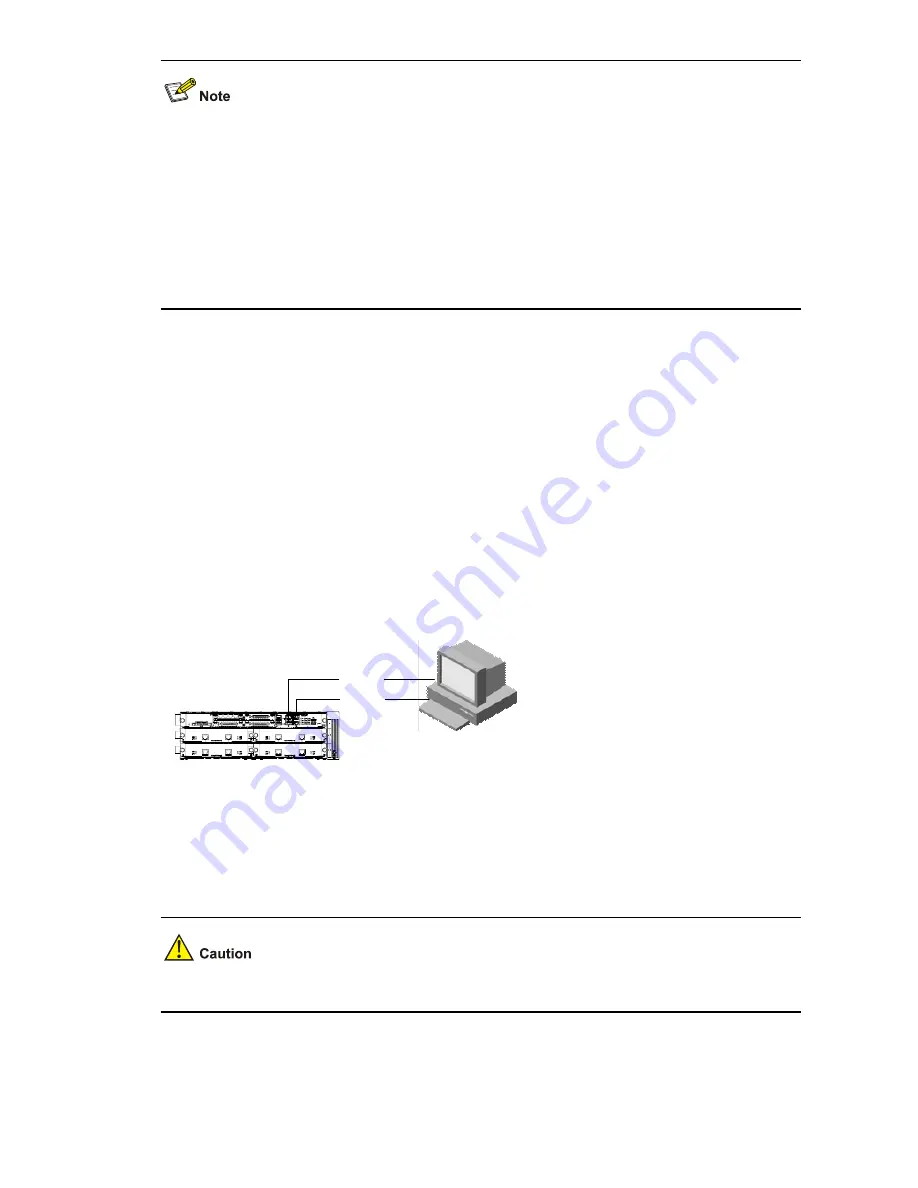
5-14
z
When configuring parameters, enter new parameters directly; or press <ENTER> to accept the
default parameter coming after the colon, “.” for “clear field”, “-” for “go to previous filed", and
“Ctrl+D” for “quit”.
z
Upon upgrade failure, the system prompts “Loading failed”. In this case, please reboot the router to
validate the reset IP address.
z
Do not modify the device name of the router; otherwise, the system prompts "Boot device should
not be modified" and skips to the next configuration item.
z
Only FE0 port can be used in MSR 20 routers, and GE0 port in MSR 30 and MSR 50 routers.
Upgrading Application Program Through Ethernet Interface
TFTP (Trivial File Transfer Protocol) is a protocol of the TCP/IP suite that is used to transfer trivial files
between clients and the server. It provides not-so-complex and low-cost file transfer services. Carried
over UDP, TFTP provides unreliable data transfer services and does not provide access authorization
and authentication mechanism. It employs timeout retransmission to guarantee the successful
transferring of data. TFTP takes much smaller size than FTP.
FTP (File Transfer Protocol) is an application layer protocol in the TCP/IP suite. It mainly transfers files
among remote hosts. Carried over TCP, it provides reliable and connection-oriented data transfer
service but does not provide access authorization and authentication mechanism.
Step 1: Set up an upgrade environment.
Figure 5-7
Set up FTP/TFTP upgrade environment
Ethernet
ROUTER
(TFTP/FTP Client)
PC
(TFTP/FTP Server)
Console
Connect Ethernet port 0/0 to a PC by using a crossover cable. Start TFTP/FTP program on the PC as
the server, and set the path of TFTP/FTP server to point to the address of application program. You
need to set user name and password if FTP server is used.
No TFTP/FTP Server is available with the MSR 50 series. You must install one yourself.
Step 2: Modify Ethernet parameters. Refer to section “Configuring Ethernet Parameters” for details.
Step 3: Enter <3> to enter Ethernet submenu. For example, when upgrading main application program,
enter <2> to upgrade:






























